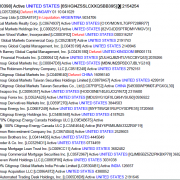Why is it so hard to know who you’re doing business with?
Every bank wants to achieve a single view of a customer, but no-one has found an easy, cost-effective, scalable way to do it. The simple fact is that there is too much customer information, entering the bank from too many places, to align and maintain into a single view. An effective solution would reduce costs, allow the bank to generate revenue faster, facilitate KYC processes and meet regulatory requirements.
















































